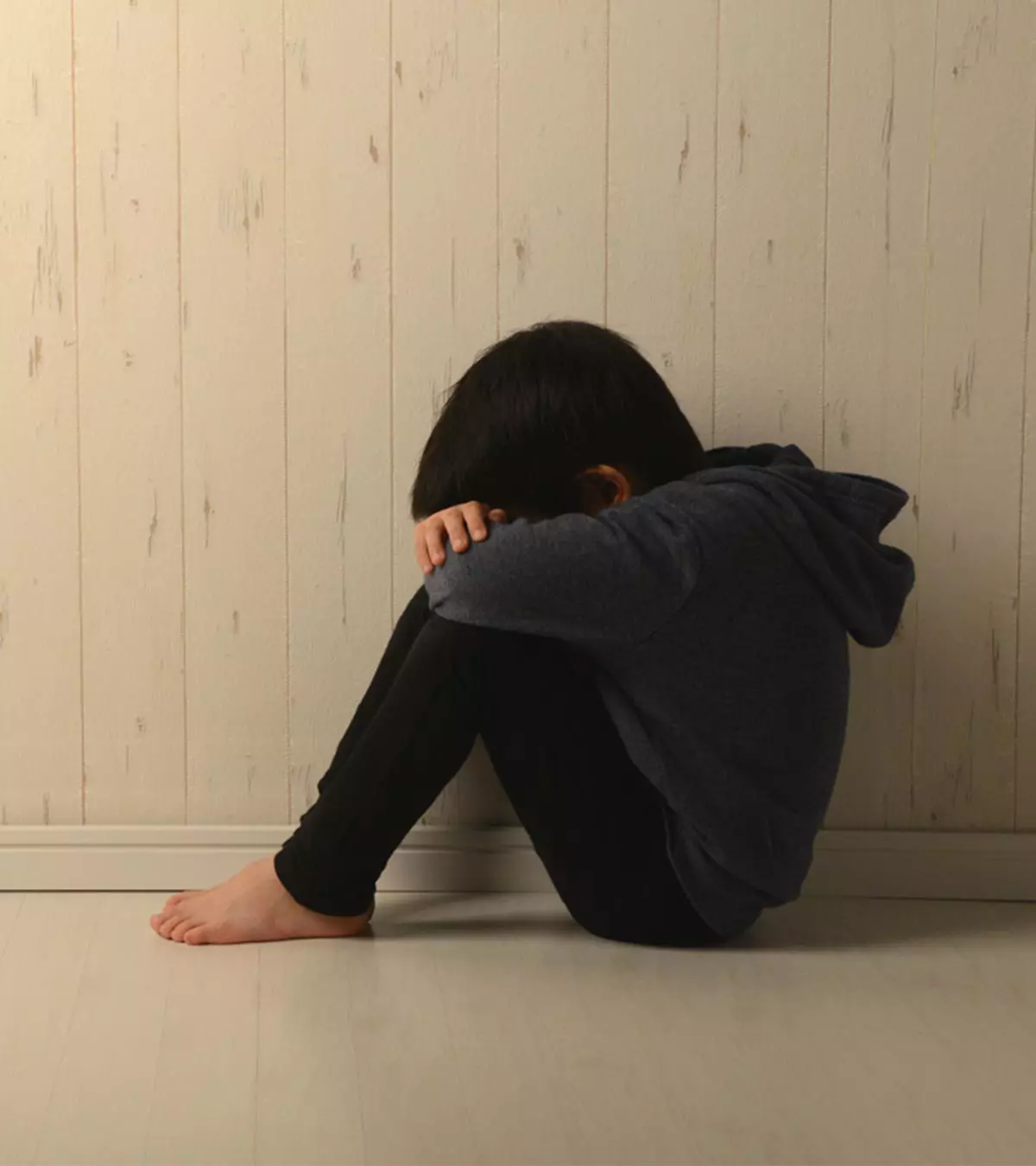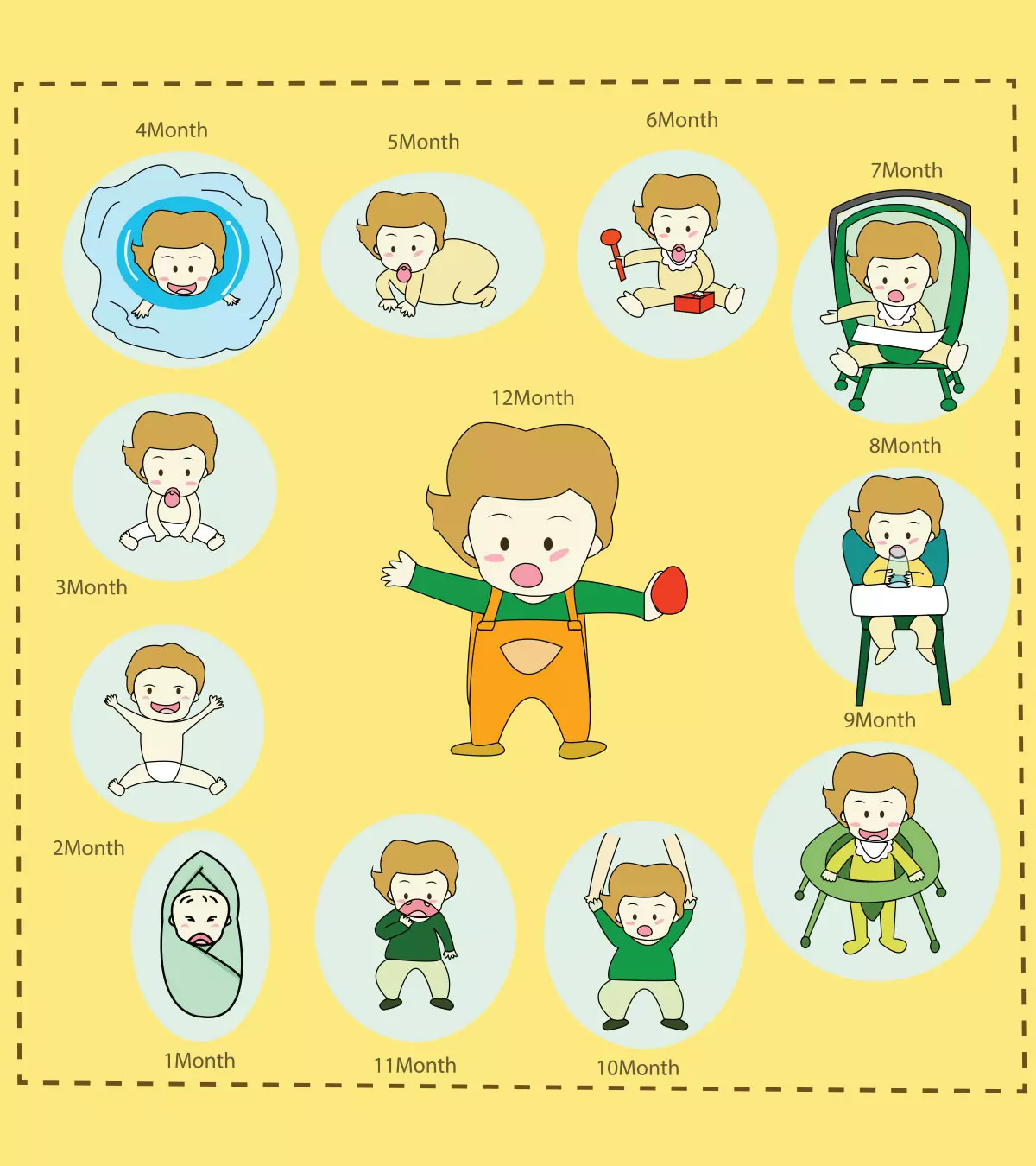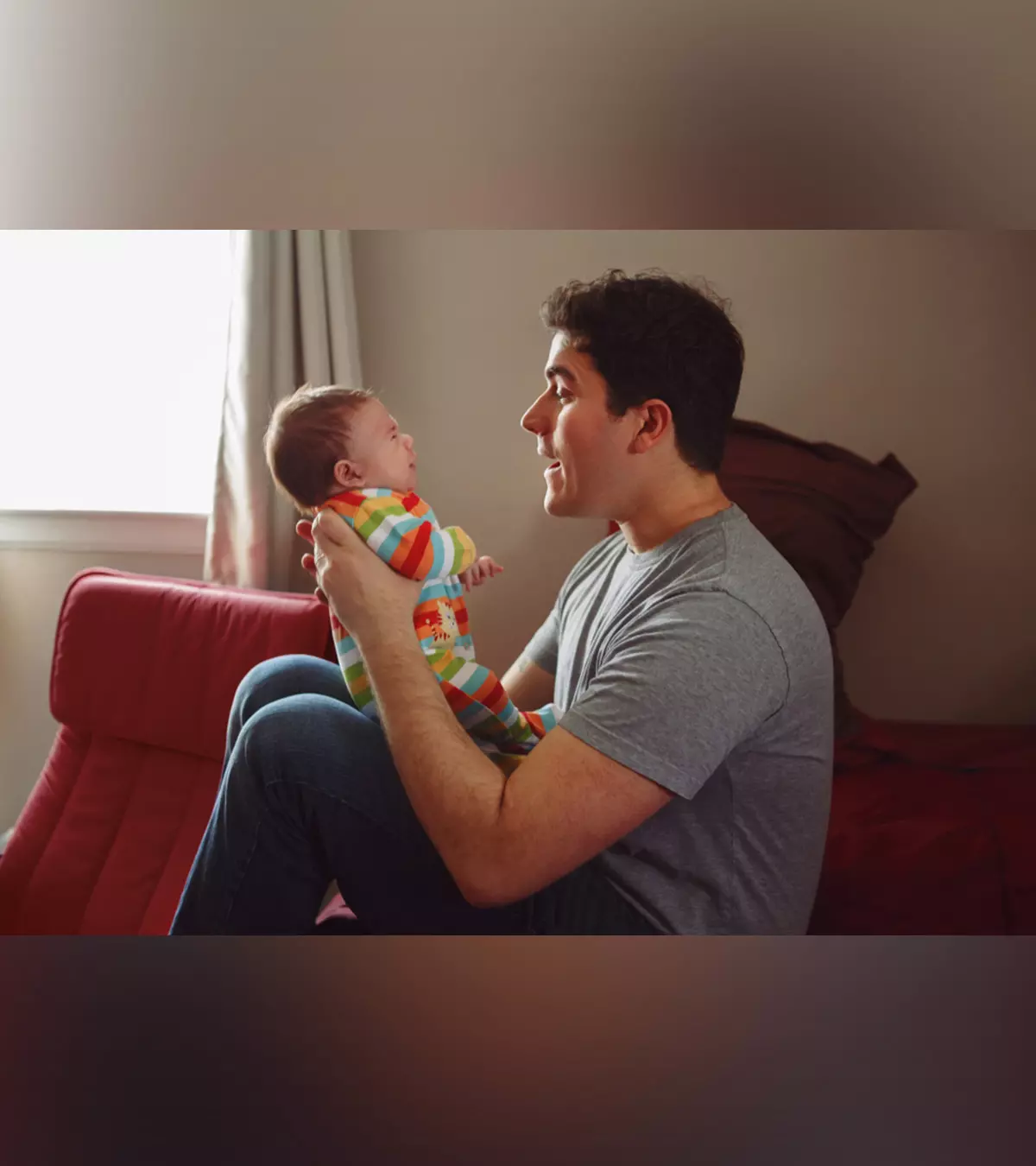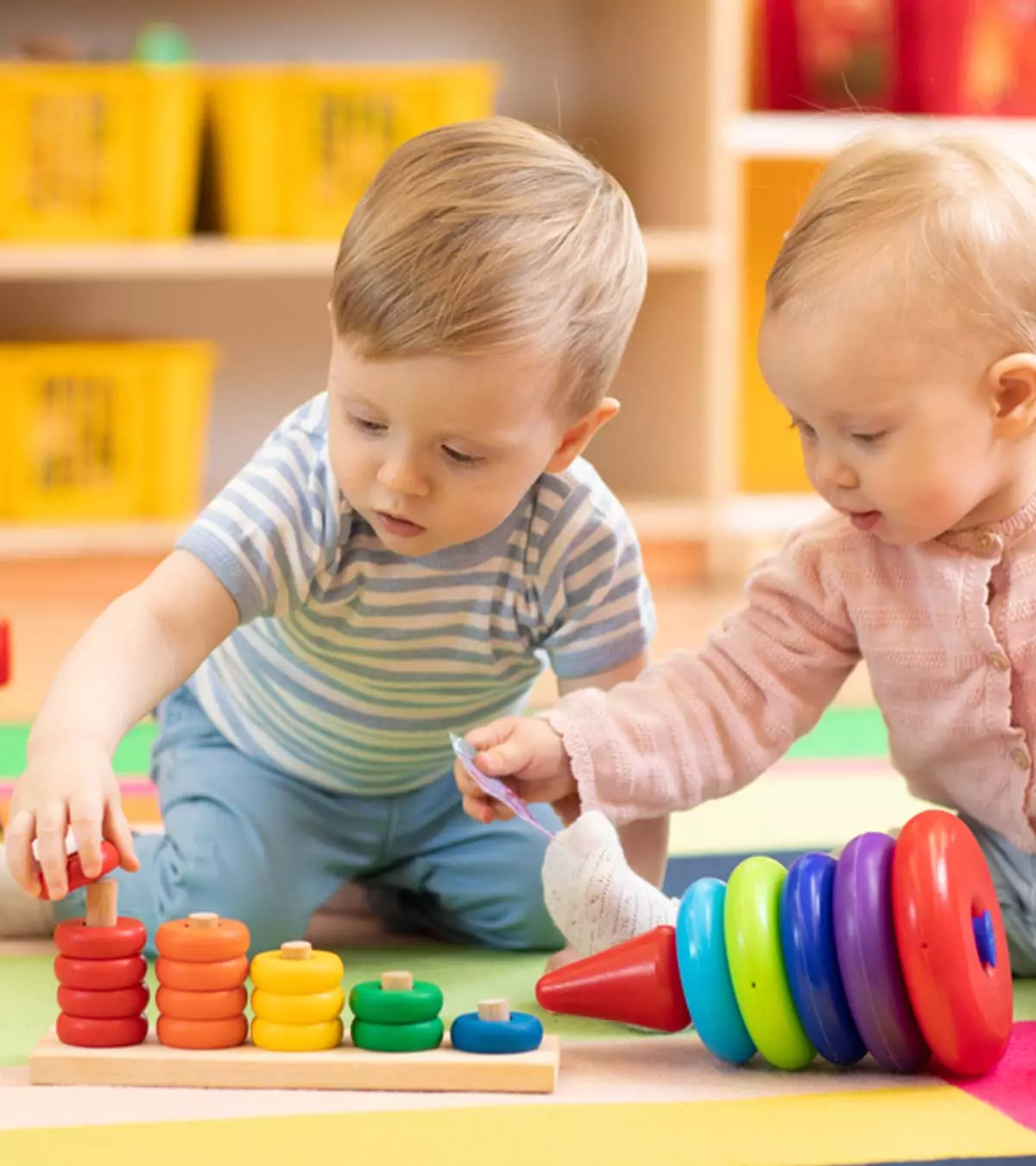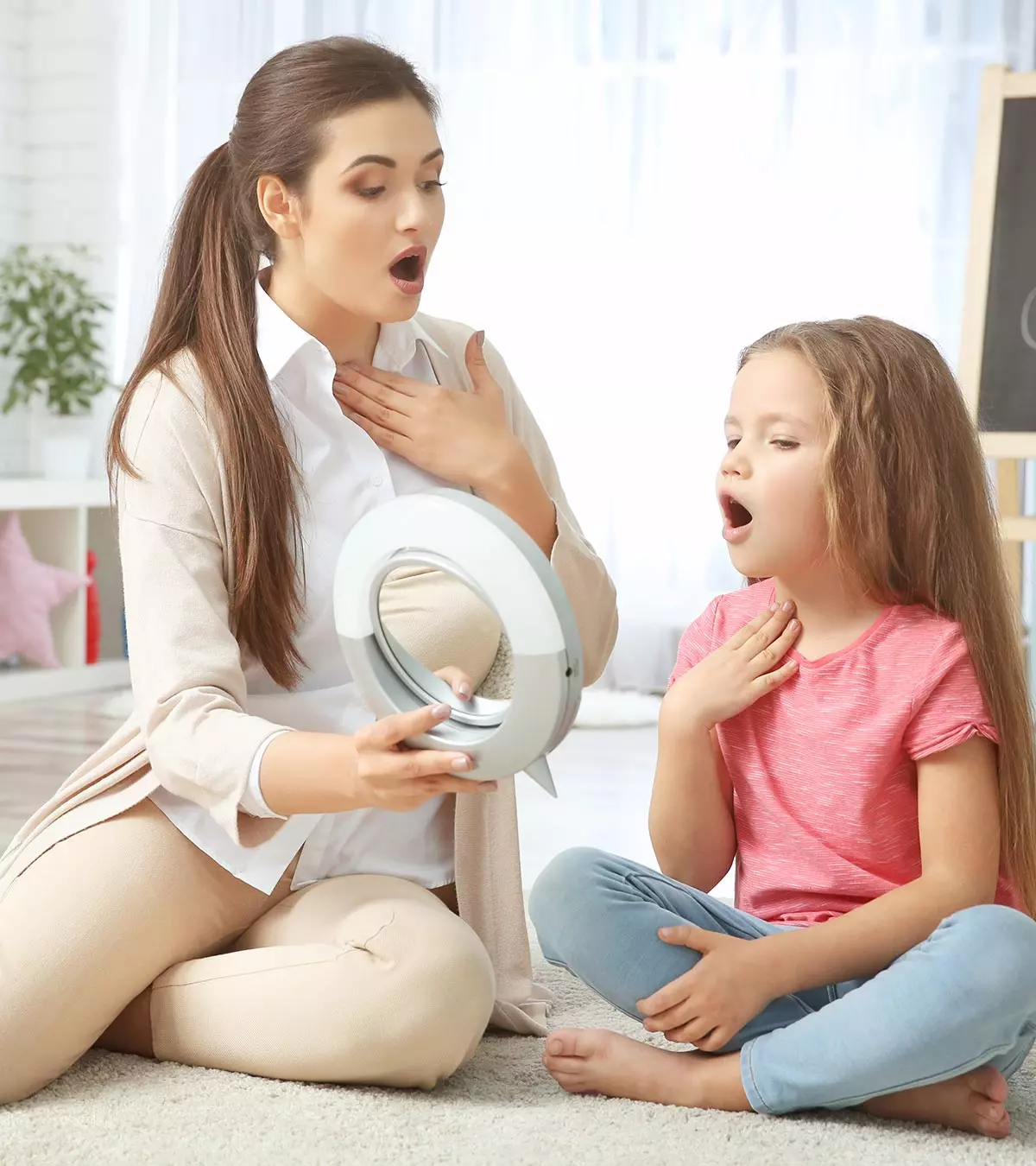
Image: Shutterstock
Speech therapy for children has numerous benefits. Children with speech delays may have problems with the smooth flow of words. They may not be able to speak complete sentences as the words or syllables break when they convey their thoughts. They may stammer and may not be able to speak with clarity. Such problems could become a barrier to a child’s communication and may lead to issues with self-confidence and self-esteem. Read this post as we talk about the indications of speech therapy in children and more.

Key Pointers
- Speech therapy can help develop children’s speaking skills, articulation, expressive language, speech volume, and ability to understand speech.
- Speech therapy is necessary if speech is unclear, if there is difficulty expressing thoughts, if there is stuttering, or if social skills have not developed.
- Children with autism or hearing impairments may require speech therapy to learn how to communicate effectively.
- If your child is struggling with speech, avoid negative comments and encourage conversation, listening, reading, and focusing on one sound at a time.
- Flashcards, question cards, mirror exercises, and hop and speak are some speech therapy exercises for children.
What Is Speech Therapy?
Speech therapy is a language intervention method that focuses on improving a child’s speech, their ability to discern speech, and overcome problems like poor articulation, disfluency (repetition of a sound, word, or phrase), and phonologicaliPhonological relates to studying how speech sounds are distributed in a language. and voice disorders (1). It is designed to help children with various communication disorders, including, speech sound disorders, problems with the receptive language, and social communication difficulties.
It helps a child express themselves better through verbal and non-verbal language. It focuses on (2):
- Articulation and fluency to form sounds, words, and sentences. Children affected with speech problems are not good at articulating words and speaking fluently. Speech therapy aims to work on this difficulty to help articulate words better.
- Regulation of the volume of speech. Often kids with speech problems speak in either low volume or high. Speech therapy focuses on helping kids articulate words clearly and regulate pitch and volume.
- Expressive language through pictorials, signs, and written forms. Children who suffer from speech disorders find it difficult to convey a message to others using words, sentences, and writing. They also struggle to use grammar correctly and frame words in a sentence and describe incidents. Speech therapy aims to work on these areas.
In general, children are reluctant to talk or talk with breaks. It is difficult to understand what they want to say. But it doesn’t mean the child needs a therapy.
How To Know If Your Child Needs Speech Therapy?
You need to understand the levels of the problem when speech therapy becomes necessary. Here are some criteria (3):
1. Your child needs speech therapy if:
- People find it difficult to understand what your child says as the speech is not clear.
- Your child struggles in uttering words or translating their thoughts into words.
- The child’s speech is disturbed with stuttering, repetition, prolongation, and blocks.
- The child utters only one or two words like mama, papa rather than two-to- three-word sentences.
- Your child has not developed on social skills like making friends, having direct contact, learning play skills, and engaging with others.
2. Your child may have perfect pronunciation and may also be an early reader. But they may still need speech therapy to hone their pragmatic language skills or the process of using language aptly in social scenarios to have a conversation, make new friends or simple requests to someone.
3. A child may also need speech therapy due to disabilities, or medical conditions like autism or hearing impairment as they affect the ability to communicate.
Dana, a mother of three and author of the blog Made Everyday With Dana, talks about how her daughter Clara experienced a delay in her speech. She says, “We don’t know why she’s speech delayed, but she’s about a year behind her peers. When she was 2 years old I didn’t worry too much about it, since the other two kids were late talkers. But by 2 1/2 she still wasn’t progressing. So we went to see a Speech Language Pathologist (SLP) to have an evaluation done, and we had her hearing checked as well. The good news is that her comprehension is right on-par for her age, and her hearing checks out fine. It’s always amazing how much you can communicate with your child without words. 90% of the time I know exactly what she wants and needs and what’s bugging her. But I know there is so much more she wants to share with us. Maybe your child is experiencing, or has gone through speech issues too?
“Our pathologist wondered if it was apraxia of speech, which is more of a neurological disorder rather than a muscle issue. But as Clara learns and progresses, we’ve ruled that out. Mostly she has an articulation problem–trouble making the proper sounds—and her language is behind as well, but largely because she can’t articulate what she wants to right now. BUT. She has made huge progress in the last 6 months since we started therapy! I am amazed. So, we continue to see a Speech Pathologist once a week and we work on words with her at home. And little by little it’s coming together (i).”
 Research finds
Research findsConsult a speech-language pathologist (SLP) in the above cases. The SLPs often begin services for these kids at a young age and continue through the school years.
Even if your child is enrolled in a speech therapy service, you may still practice speech therapy exercises at home to support the treatment. For children with conditions like dysarthria, you can opt for alternative and augmentative communication (AAC) with the help of the therapist.
If the speech, is delayed then the first thing to consider is if the hearing of the child is fine. This can be assessed at home to see if the child responds to loud sounds or turns towards the music or sound from the television.
Tips For Parents On Speech Therapy At Home
One of the most important things to do is to avoid any negative comments about your child’s speech. If your child is stuttering, don’t pressurize them. Instead, follow the below tips (4) (5):
- Encourage conversation: Ask your child thought-provoking things like, “What would you do if you have a bird for a friend?” By asking questions that extort detailed response, you are encouraging your child to express their ideas.
- Listen carefully. Listen to your child with attention even if they are taking time to complete their sentences. When you are listening, your child gets the confidence to speak. They try their best to talk fluently.
- You can try this exercise: Get your child and their friends or siblings together and make a circle. Whisper a sentence to one child, and they will pass it on to the other and so on. Ultimately, the sentence announced by the last child should be the same that you told the first child.
- Make your child read: Buy some interesting story books or pick up a news piece that is of interest to your child and ask them to read it aloud. Tell them to repeat it twice or thrice. Such activities foster speaking as well as language skills.
- Do an assessment: Evaluate your child and see in which areas your child is delayed. This will help you know if speech issues are standalone or are connected with other developmental problems. You can analyze by comparing your child’s performance with the normal milestones in children of that age.
- Target areas: Choose specific problem areas that you want to address and resolve. Keep the goals achievable both for you and your child. Focus on age-specific goals that the children of that age normally reach.
 Quick tip
Quick tip- Address one sound at a time: Begin with breaking down a problem into simpler and smaller versions and then teaching them specifically.
If you want to teach your child how to use the f sound correctly, start by showing them how to utter the sound first (fff), then teach syllables (fuh/ oof), then move on to words (f for fish) and finally use those words in sentences and conversation.
You can try several activities to improve your child’s speech. But remember that your child should enjoy them. They may not cooperate if they feel bored.
Speech Therapy Activities And Exercises
Each of the exercises we share below engages the child and stimulates speech production.
1. Flashcards and question cards

Place a few flashcards with pictures in front of your child and ask them to say what they see on the card. Start with a few cards and increase the pictures as you progress. If your child struggles with certain words, you will understand where you need to invest more time.
Question cards have simple questions for children. Choose one card at a time and slow down to have a conversation. This can be a grand strategy to pull your child into a conversation and work on communication skills for kids.
The questions can be like, “If you were to receive one present right now, what would it be?”/ “If you could change one thing about school, what would that be?”
2. Mirror exercise

Mirrors provide visual feedback. Most children with articulation problem do not know how to move their mouth to form sounds accurately. Speaking in front of a mirror helps a child watch how they move their mouth when making that particular sound.
Stand in front of the mirror and produce each sound for your child. Then, help them discern the differences through the mirror.
3. Hop and speak

This game makes your child repeat the word nine times. Start with the words you want your kid to practice.
Draw hopscotch with 1-9 numbers and ask the child to utter the word each time they hop on a number. Once they complete hopping up to 9, change the word and let them hop again, this time with the new word.
You can begin with fewer words and increase them gradually.
Once they complete the game by saying the words correctly, reward them with a gift. This increases the child’s confidence.
4. Play catch

Take a ball and throw it back and forth. Play catch with your kid as they practice their words. This way they are doing two exercises at a time.
5. Go for a walk

If you are walking somewhere with your kid, have them take one step ahead for every correct repetition. You may try this when you are in a park or entering your house.
In addition to playing such games with your child, you need to make them exercise their oral muscles.
Oral Motor Exercises
Oral motor refers to the use of muscles inside the mouth, including the lips, cheeks, jaw, and tongue. All these parts are tied to muscles, which can be strong or weak, coordinated or uncoordinated.
We need strong oral motor skills to be able to talk, eat, swallow or drink. Here are different oral motor exercises for your kids to practice in the comfort of home.
1. Lip movements

These lip movements make for an excellent oral exercise for kids.
- Say ooo, then eee. Combine “oo-ee.” All these utterances have different movement patterns.
- Ask the kid to smile big, relax and repeat.
- The child can puff out their cheeks while not opening the lips. Alternatively, they may puff one cheek and rest the other.
- Ask the child to blow a balloon or whistle.
- The same can be done with lips. Puff the upper lip followed by the lower lip. Relax. Repeat.
- Make the child drink from a straw instead of a cup.
 Point to consider
Point to consider2. Tongue movements
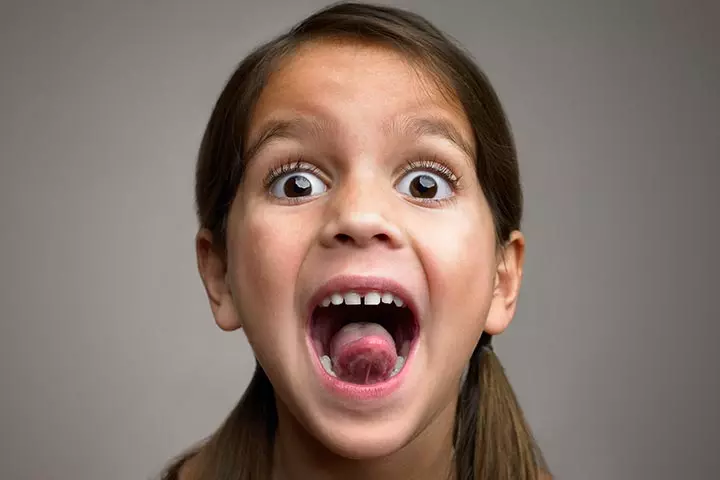
Try these ‘tongue twisters’.
- Make your child practice tongue tip sounds like “t-t-t-t,” “d-d-d-d” “p-p-p-p.”
- Say “go” with exaggeration
- Have your kid hold their tongue and not rest it on the lips or teeth. They have to tighten the tongue and then relax.
- Ask the child to protrude the tongue and make circular movements.
3. Cheek movements

You can strengthen the child’s cheek muscles with these movements:
- Ask your kid to keep their lips sealed and contract the cheeks.
- Make an “o” with the lips and move them in a circular motion. Relax and repeat.
- Use a straw to drink water.
A few other exercises for oral motor skills
4. Blow bubbles

Let your child blow bubbles for breath-control as well as for the lips. It makes children purse their lips, which is an oral motor exercise.
5. Tune the harmonica
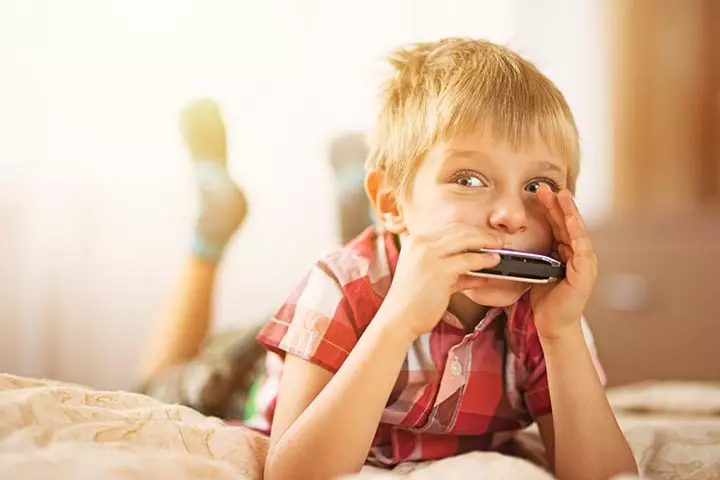
Blowing the harmonica helps in breath-control and lip-pursing. If your kid’s breath-control is weak, have them make louder sounds from the harmonica, and if their lip strength is weak, focus on playing one note at a time.
6. Peanut butter
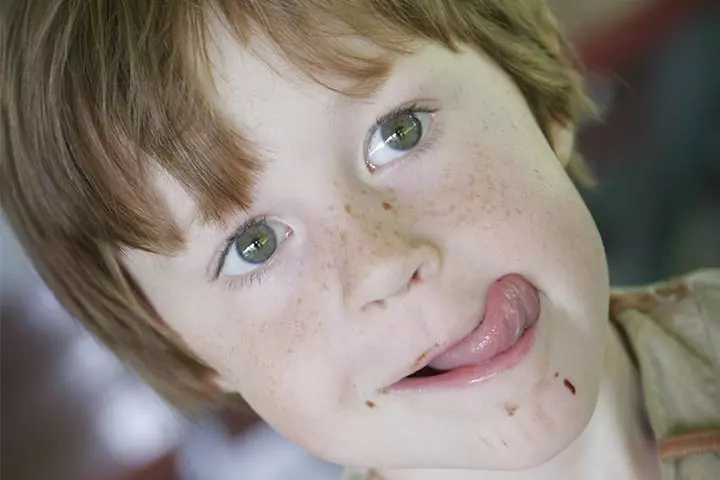
Who doesn’t love peanut butter? Rub some on the child’s lips and have them lick it. Apply the butter from one corner to the other so that the tongue reaches from one side to another.
Besides these activities, you can encourage your kid to talk and develop their speech with simple activities right from their infancy.
Age-wise Activities For Speech Development
Here are some activities you can try at home.
Remember that children learn to speak naturally and hence you should not put any pressure on them. These activities may be taken up only if the child is liking them. Do not force the child to do these activities.
Birth to 2 years
At this age, the baby cannot speak but make some sounds. Hence you cannot know if they need any speech therapies. You can take up the below exercises if you want to encourage your infant to make sounds/ utter syllables.
- Make sounds like “ma,” “ba,” “da”. Eventually, your baby might repeat them.
- Pretend to have a conversation with your baby whenever they make sounds. Talkback and repeat whatever they say. This encourages them to ‘talk’ more.
- Teach your baby to clap hands.
- Talk to your baby while bathing, walking or feeding them. You may talk about anything.
- Use gestures like waving and pointing.
- Talk to your baby about animal sounds, like, “The dog says bow-wow”.
- Use vowels in the words.
2 to 4 years
- Speak with clarity so that the child learns that from you.
- Repeat what your child speaks to tell them that you understand.
- Add on to what they say. Example: “Mango juice? I have juice. I have mango juice. Do you want mango juice?”
- Help your child understand and ask questions. Play the yes/no game. You may have them come up with sentences like, “I can fly,” “A tree can walk”, and then you answer in yes or no.
- Put familiar objects in a box. Have your child take one out at a time and tell you what its name is and how to use it. “This is a pencil. I use a pencil to draw sketches. I also write using this pencil.”
- Ask the child to read aloud slowly, pronouncing each word separately.
You may also use speech development toys and speech therapy books.
Frequently Asked Questions
1. At what age should a child have speech therapy?
Some children might talk sooner than others. The pediatrician may advise you to wait until the child is 24 months old as children usually start talking between 18 and 24 months. However, if you notice the issues continuing beyond 24 months, you should contact a speech therapist (6).
2. What does a speech therapy session look like?
Speech therapy includes different activities. The therapist may use a picture book and engage the child in talking, playing, and repetition to build language skills. They may teach the child how to move the tongue while making certain sounds or pronouncing some words. Tongue, lip, and jaw exercises may also be taught. The speech therapy may also involve swallow therapy and oral feeding. These activities are offered either one-on-one or in a group (7).
3. What causes speech delays?
Speech delay may happen due to structural defects in the tongue, lips, palate, or frenum or may be a symptom of disorders such as hearing loss, expressive language disorder, psychosocial deprivation, elective mutismiAn anxiety disorder exhibited as reluctance or inability to speak in social situations , autismiA neurological and developmental disorder that may impact the way they socially interact, communicate, and learning , receptive aphasiaiReceptive aphasia is when the person speaks fluently, but their speech does not make any sense , and cerebral palsyiA neurological disorder affecting a person's muscle control, thus affecting posture and balance . It is also seen in kids from bilingual backgrounds or may occur due to developmental delay in children (6) (8).
4. How long does speech therapy last?
Short-duration therapy interventions may be offered in segments, such as one hour a week for six weeks. Some therapists may prefer a long-haul, daily treatment approach, such as that given in schools. On average, most sessions are relatively short (about 20 hours) (9).
5. What are some common speech therapy techniques used for children?
Speech and language therapists use behavioral techniques such as imitation, modeling, repetition, and extension. These features are used to draw the child’s attention. Several repetitions of such tasks are needed for the child to practice and eventually be motivated to speak (10).
6. How long does speech therapy take to show results?
The therapy duration depends on the issue’s severity and the child’s progress. Children may show immediate or gradual improvement. Progress is usually evaluated every three to six months (11).
7. How can technology be used in speech therapy for children?
Various mobile apps may assist children in their speech therapy journey. Therapy is also available online, available from the comfort of one’s home. Artificial intelligence and virtual reality may improve the efficacy of such treatments (12).
It takes patience and a positive attitude to deal with a child’s speech disorder. Before introducing speech therapy for kids, it is important to understand the specific area they face trouble with. Kids with speech problems may face issues with pronouncing words or regulating their volume. Speech therapy for kids is designed to target all of these problems associated with the disorder. You may try some practical activities to encourage your child to speak better and more fluently. Above all, remember to be empathetic for fruitful results.
Infographic: How To Employ Speech Therapy For Children At Home?
If your child’s speech is unclear, or they struggle or stutter when speaking, these could indicate that your child needs speech therapy. While a professional therapist is surely helpful, the following infographic provides some suggestions for speech therapy you can employ at home for children.
Some thing wrong with infographic shortcode. please verify shortcode syntaxIllustration: Speech Therapy For Kids: What It Is Exercises And Tips
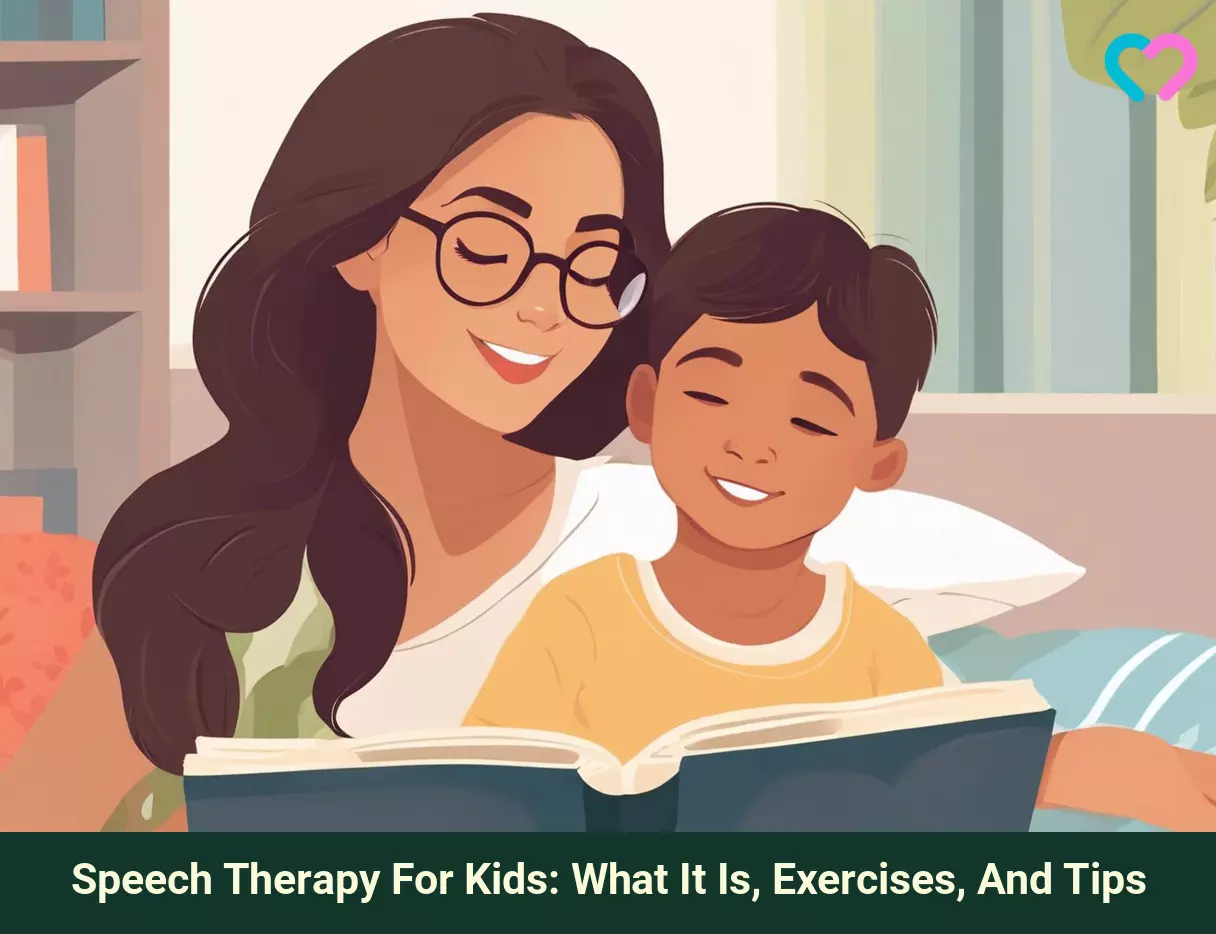
Image: Stable Diffusion/MomJunction Design Team
Are you concerned with your child stuttering? Do you wish to help your child get over it? Get tips on how to support them in this video on speech therapy tips.
Personal Experience: Source
MomJunction articles include first-hand experiences to provide you with better insights through real-life narratives. Here are the sources of personal accounts referenced in this article.
i. 3 years old! And finally talking;https://www.madeeveryday.com/3-years-old-and-finally-talking/
References
- What is speech therapy?
https://www.ncbi.nlm.nih.gov/books/NBK561506/ - Speech Therapy.
https://childrenstherapy.org/ - Speech and language therapy interventions for children with primary speech and/or language disorders.
https://www.cochranelibrary.com/cdsr/doi/10.1002/14651858.CD012490/full - Speech therapy tips for parents to use at home.
https://www.reidhealth.org/blog/speech-therapy-tips-for-parents-to-use-at-home - Delayed Speech or Language Development.
https://kidshealth.org/en/parents/not-talk.html - At what age should speech therapy begin?
https://www.woosterhospital.org/at-what-age-should-speech-therapy-begin/ - Speech Therapy for Children: What are the Benefits?
https://napacenter.org/importance-speech-therapy/ - Evaluation and Management of the Child with Speech Delay
https://www.aafp.org/pubs/afp/issues/1999/0601/p3121.html#:~:text=A%20delay%20in%20speech%20developmentto%20maturation%20delay%20or%20bilingualism - James Law et al.; Speech and language therapy interventions for children with primary speech and/or language disorders
https://www.ncbi.nlm.nih.gov/pmc/articles/PMC6464758/ - James Law et al.; (2017); Speech and language therapy interventions for children with primary speech and/or language disorders
https://www.ncbi.nlm.nih.gov/pmc/articles/PMC6464758/ - Speech and Language: Frequently Asked Questions.
https://clarityupstate.org/frequently-asked-questions/ - How Technology is Changing the Field of Speech-Language Pathology.
https://blog.carlow.edu/2025/03/14/how-technology-is-changing-the-field-of-speech-language-pathology/
Community Experiences
Join the conversation and become a part of our nurturing community! Share your stories, experiences, and insights to connect with fellow parents.
Read full bio of Dr. Mubina Agboatwalla
Read full bio of Dr. Ritika Shah
Read full bio of Harshita Makvana
Read full bio of Ghazia Shah






